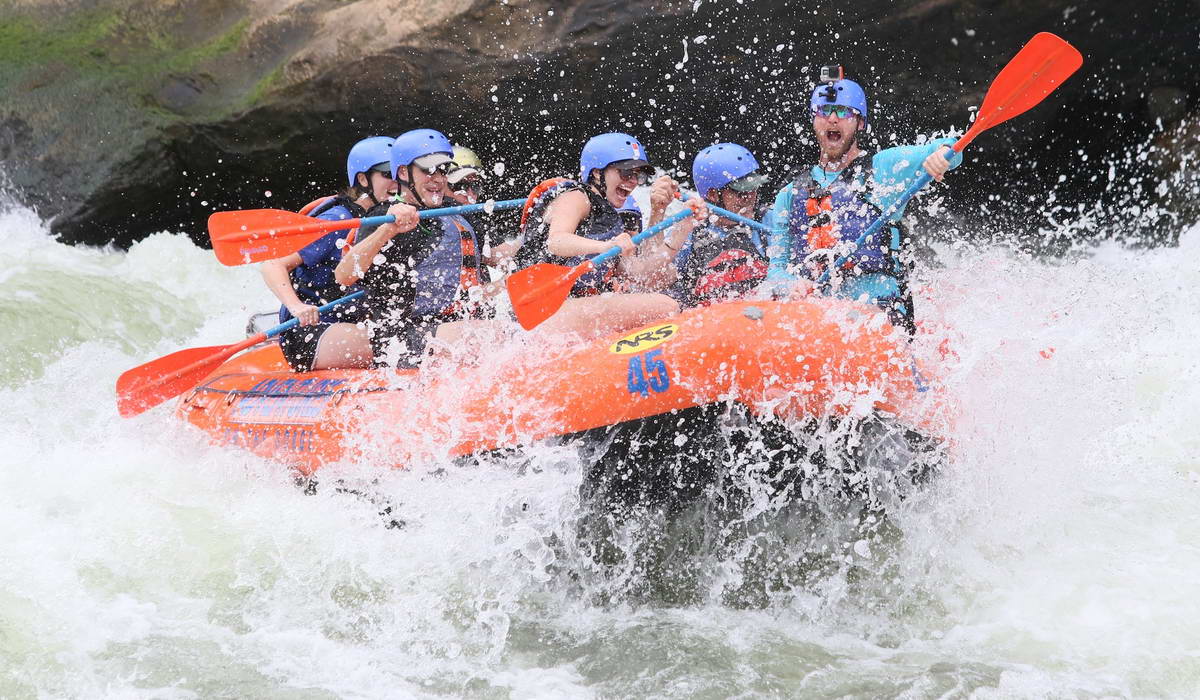Best Time of Year to Plan a Grand Canyon Rafting Trip

Deciding when to plan your Grand Canyon rafting trip depends on striking a balance between the weather conditions and your personal preferences. Rafting down the Colorado River through the Grand Canyon is a remarkable experience at any time of year, but commercial rafting trips are offered from April through October. Within this timeframe, there are distinct "mini seasons" that can influence your experience. To ensure your trip meets your expectations, it's important to consider the weather and evaluate what best fits your preferences.

April and October:
These months are known for their cooler temperatures, with average highs ranging from 82-85 degrees Fahrenheit and lows between 52-55 degrees. If you travel in April, you might be treated to a stunning display of spring wildflowers that blanket the Canyon's vast landscape. October, on the other hand, might present a landscape rich in color, especially after a wet monsoon season. These months also offer the highest chances of spotting California Condors and Bald Eagles. During April and October, the Colorado River typically runs clear or green. Be prepared for both cool and warm weather gear, as late spring or early fall storms can occur. Trips during these months tend to be longer due to two main reasons: Park Service Regulations allow extended travel times, and the earlier sunsets result in fewer river miles being traveled each day.
May and September:
The weather conditions in May and September are quite similar on the Colorado River. The first two weeks of May and the last two weeks of September see temperatures start to warm up or cool down significantly, respectively. During these periods, the average highs range from 92-95 degrees Fahrenheit, but it's not uncommon for temperatures to exceed 100 degrees by late May or early September. The average lows remain more consistent, ranging from 65-70 degrees Fahrenheit. Many travelers prefer these months because the milder temperatures are still warm enough to enjoy the frigid waters of the Colorado River (which flow between 48-55 degrees Fahrenheit), yet cool enough for comfortable hiking throughout the day. Wildlife is more prevalent during these times. In May, animals are drawn to the Colorado River as potholes in the side canyons dry up. In September, Desert Big Horn Sheep are in rut, and lucky travelers might witness rams jousting for their ewes.
June:
June in the Canyon is known for its extreme heat, with average highs ranging from 103-105 degrees Fahrenheit and lows from 72-75 degrees. The risk of encountering storms is lower in June, but the lack of cloud coverage means the Canyon can feel exceptionally hot. River guides consider June to be the hottest month in the Canyon, so if you're sensitive to heat, it might not be the best time for you. However, many travelers love June for the clear or green water and the opportunity to swim and take "wet" hikes to the many beautiful waterfalls in the Grand Canyon. June also marks the start of the high water season, due to increased hydroelectric needs, resulting in higher water flows. Travelers seeking big water might prefer rafting during these months, although it's worth noting that big water doesn't always mean 'better' rapids, as some have more energy in low water while others peak in high water.
July and August:
These months are characterized by the monsoon season in the Canyon, with the highest water levels in the Colorado River to meet the electricity demands of the Southwest. Average highs during this period exceed 105 degrees Fahrenheit, with lows ranging from 75-77 degrees. The monsoon season brings cloud coverage, which can make the "feels like" temperature more bearable. Typically, afternoon storms roll in, releasing moisture into the air and generally lasting between 15 minutes to an hour. Occasionally, storms can last several days. For some travelers, these storms are a highlight of their trip, while others who prefer to avoid rain might want to choose a different time of year. The first monsoon storm often turns the river a reddish-brown color due to sediment, which can be particularly appealing for photographers looking for dramatic shots.
It's important to remember that temperatures are generally cooler the further east you are, closer to river mile 0 at the start of the Colorado River through the Grand Canyon, and they gradually increase as you travel downriver towards the west. When checking real-time temperatures, note that there can be a 20-degree or more fluctuation between the top of the rim and the river. For accurate weather conditions at Grand Canyon Village (South Rim), where many partial canyon trips begin with a hike via the Bright Angel Trail, visit the National Weather Service. For accurate weather at the bottom of the Canyon, click the weather at Phantom Ranch link and input "Phantom Ranch, US", which is located at the bottom of the canyon at river mile 88.
If you're interested in rafting from November through March, private permits are available through the Grand Canyon National Park Service via a weighted lottery system. These permits are limited and highly sought after, with many people waiting between 1 to 5 years to secure a date. The more common method for rafting the Grand Canyon is to join a fully supported, guided tour with one of the sixteen outfitters.






